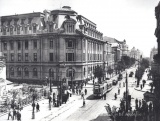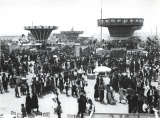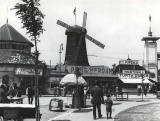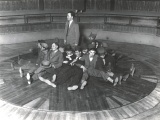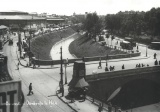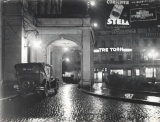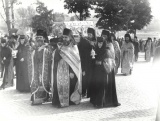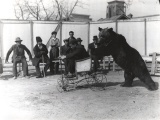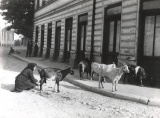Difference between revisions of "Nicolae Ionescu"
m (Text replacement - "imagesize = 250px" to "imagesize = 342px") |
m (Text replacement - "imagesize = 342px" to "imagesize = 338px") |
||
| Line 1: | Line 1: | ||
{{Infobox artist | {{Infobox artist | ||
|image = Nicolae_Ionescu_si_sotia_sa.jpg | |image = Nicolae_Ionescu_si_sotia_sa.jpg | ||
| − | |imagesize = | + | |imagesize = 338px |
|caption = Photo of Nicolae Ionescu and his wife. | |caption = Photo of Nicolae Ionescu and his wife. | ||
|birth_date = {{birth date|1903|11|1|mf=y}} | |birth_date = {{birth date|1903|11|1|mf=y}} | ||
Latest revision as of 23:50, 25 May 2022
 Photo of Nicolae Ionescu and his wife. | |
| Born |
November 1, 1903 Bucharest |
|---|---|
| Died | 1974, Bucharest |
Contents
Photography[edit]
Nicolae Ionescu (born 1903) worked first as a typographist in Bucharest. In 1927 he got employed in the Royal Army as a photographer and began photographing the city of Bucharest but also other places in the country. In order to follow the latest developments in photography he studied German and English. In 1928 he got married and used the dowry to acquire modern equipment for the photo laboratory.
In 1930 he traveled to France and worked several months in the Lumiere factory in Lyon, and for a few months in Paris at Pathe Nathan. He came back to Romania and is committed by the National Printing with a contract clause that was stipulated that he was free to be able to photograph two months each summer.
In 1937 Eugen Lovinescu hired Ionescu as technical director at the Adevărul newspaper, where he met Iosif Berman. In 1945 he founded the publishing house Encyclopedia of Photography which enjoyed some commercial success until 1947, when it was dissolved.
In the period 1956-62, until his retirement, he was employed as a photographer by the Institute of History of Art. Afterwards he transferred part of the photographic material he gathered to the Romanian Academy Library, where it has been preserved until today.
Gallery[edit]
Awards[edit]
The works of Nicolae Ionescu won the second place at the Exhibition of photographs in 1936, and ONT bronze plaque at the International Photography Exhibition in Bordeaux in 1957.
Legacy[edit]
His photographs of Bucharest from the 1920s and 1930s provide a valuable document of the city. After his death, his wife sold a large part of the negatives, and ultimately the entire collection to the municipal bookshop "Mihai Sadoveanu" and the Romanian Academy.
